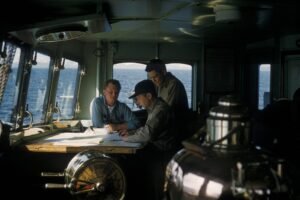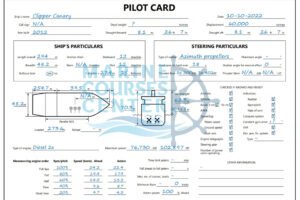
Understanding Tides and their Effects on the Ocean

Table of Contents
introduction to Tides
Tides are one of the most important aspects of the ocean’s behavior, influencing a wide range of activities from navigation to fishing. In this article, we will explore the factors that affect tides and the role they play in determining the ocean’s movements.
The Lunar Day and Tidal Movement
Each lunar day is 24 hours and 50 minutes, and as a result, each successive high and low water (HW and LW) occurs approximately every 12 hours and 25 minutes. This means that each day’s high and low tides occur later than the day before.
The Influence of the Sun on Tides
The Earth-Moon system orbits the Sun, which results in the observation of stages of lunar growth from new to half-moon (waxing) and half to full-moon (waning) during the lunar month.
The Effects of New and Full Moons
When the Sun and Moon are in the same vertical plane – New and Full moons – their gravitational effects on the Earth combine to create a larger than normal tidal movement known as SPRINGS. In this case, the change in level between HW and LW, known as the tidal range, is at its greatest. Spring tides occur twice a month.
The Effects of First and Last Quarter Moons
When the Sun and Moon are displaced by 90° – First and Last Quarter – their gravitational effects are in opposition, producing a net reduction of attractive forces and hence a reduced tidal movement known as NEAPS. In this case, the tidal range is at its least. Neap tides also occur twice a month.
The Visual Effects of Tides
The differences between spring and neap tides can be clearly seen on a gently sloping beach as the high and low water marks move their position up and down the beach as each tide passes.
Tidal Streams
A tidal stream is the horizontal movement of water that takes place as the tide levels fall and rise. Tidal streams are measured in knots (RATE) and are quoted in publications and on charts, having a particular direction (SET).
The Strength and Direction of Tidal Streams
Tidal streams may vary in strength and direction according to the state of the tide, such that rates tend to be at a minimum during the period around HW or LW and at a maximum during the period midway between HW and LW. Spring tide streams are stronger than those experienced during a neap tide, because of the difference in their ranges.
The Ebb and Flood of Tidal Streams
When the stream is due to a falling tide, it is called the EBB, while on a rising tide is referred to as the FLOOD. Tidal stream rates can be so high that even the most powerful of vessels are seriously affected by their influences.
Factors Affecting the Predicted Heights of Tides
There are a number of factors that can change the height of the predicted tides, including meteorological effects, barometric pressure, wind, seiches, storm surges, negative surges, and seasonal changes in mean sea level. When the under keel or overhead clearance for a vessel is small, these factors should be given careful consideration, as they may make it unsafe for the vessel to pass certain areas.
Conclusion
Tides play a critical role in the behavior of the ocean and are influenced by a variety of factors. Understanding the effects of the Sun and Moon, tidal streams, and other factors



